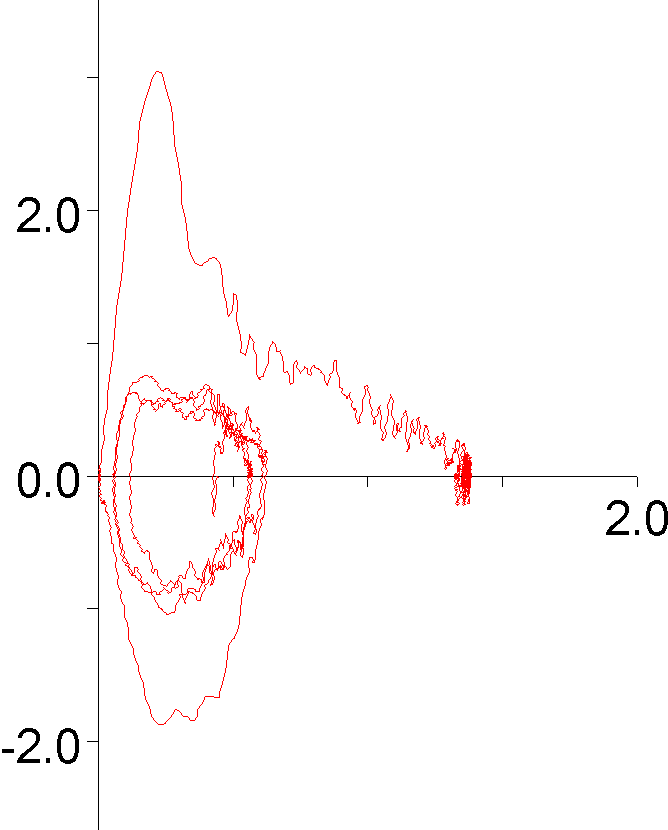I was reviewing a spirometry report and noticed something odd about the flow-volume loop, or more specifically the tidal loop, and this got me to thinking about what tidal loops can tell us about test quality, patient physiology and the ability of the technician to coach a spirometry test.
There are at least a couple things wrong with this FVC test effort. First the exhalation time was only about 3 seconds so the FVC volume was likely underestimated by a fair amount. Second, it wasn’t reproducible and this was actually the patient’s the best test effort. What I noticed however, was that the tidal loop was shifted almost completely to the left.
There are a number of criteria for assessing the quality of a forced vital capacity. Exhalation quality can be determined reasonably well by back extrapolation, expiratory time and the terminal expiratory flow rate. When it comes to assessing the completeness of the inspiration that precedes the exhalation however, there really isn’t much to go on other than the reproducibility of an individual’s spirometry efforts.
When I measured the tidal loop what I saw was that IRV was about 0.10 L and the ERV, although likely underestimated by a fair amount, was at least 0.80 L. What I actually think this tidal loop is saying is that the patient didn’t take as deep a breath as they could at the start of the test, but what other things could affect the position of the tidal loop?

